'We have a kind of power' - a day on Mont Ventoux in the Tour de France publicity caravan
Ever wondered what it’s like to be in the Tour de France publicity caravan? Chris Marshall-Bell dons his Capital J Journalism hat and finds out
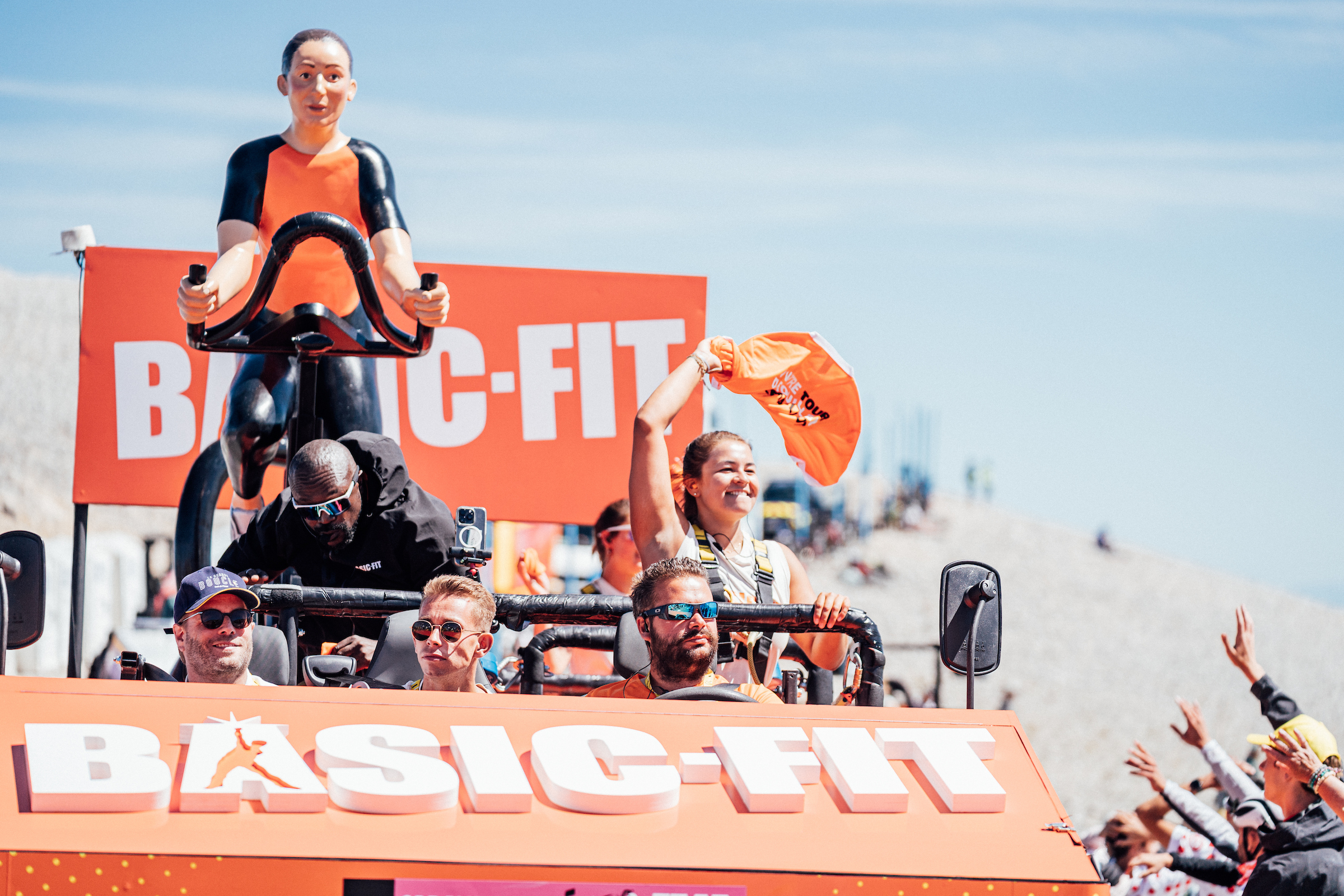
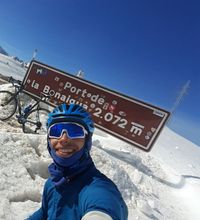
There’s an inversion of reality at the side of the road at the Tour de France. The little children – possibly, like their parents, dressed in some form of fancy dress, or caked out in sponsor-branded hats, t-shirts and clutching free tat – look bamboozled and perplexed by events; why is a melon coming towards me at 50 km/h? The older kids, but more to the point, definitely the adults, are fully conscious of the downright ridiculous and bizarre chain of events, and embrace it wildly and uncontrollably, jumping and flailing around, stepping over anyone – pensioners, even their own children – to reach out and grab a keyring, free washing up tablets or items designated for immediate binning such as a promotional flyer. As the Tour de France publicity caravan passes by, ordering people to squat, press-up, bicep curl and dance, hundreds of thousands of people lose their collective minds. And it's like this, rinsed and repeated, for 21 summer days.
First introduced into the Tour circus in 1930 as a way for businesses to promote their products around France, the caravan now numbers 30 floats of chopped-in-half vans and remodelled cars that include vehicles with cows, sheep and pigs on it, and others with drum sets, beds and guitars on them. La caravane publicitaire is, by some estimates, what brings around half of the race’s spectators out to the roadside. Forget catching a glimpse of Tadej Pogačar and Jonas Vingegaard, people from all cross-sections of society are only here to be silly, daft, and childish.
“This is my 10th year working at the Tour de France and I come back every year because it’s a big party everywhere,” says Otis, the MC with boundless energy on European-wide fitness chain Basic Fit’s float, making its riproaring debut this year. “I love the connection with people, all their joy. We have a kind of power because we have some gifts, and when you give that to somebody, it’s like you give them some smiles and joy. It’s just wonderful.”
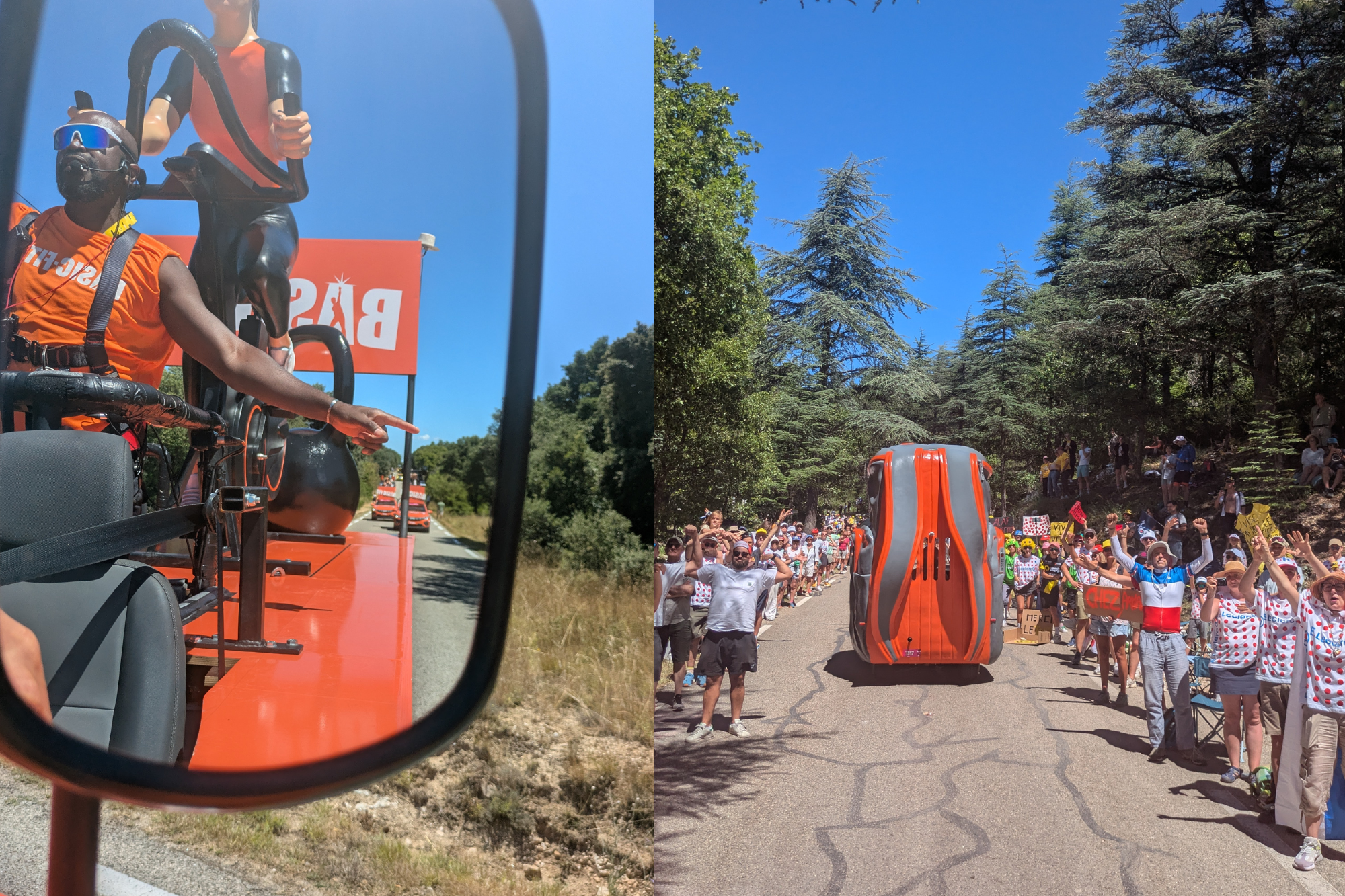
It doesn't matter that the hats and t-shirts would be rejected in an instant by a thrift store starved of stock and on the brink of liquidation, nor that the straps on the bags for life have a shorter lifespan than the duration of the actual race, free gifts are free gifts, and people – including even the CRS police with their big scary guns – get their arts and craft sets out in advance to maximise the gains.
In 180km of road between Montpellier and Mont Ventoux on stage 16, the Basic Fit float that I take a front row seat in throws items at dinosaurs, Spidermen, aliens, nuns, race jockeys, Super Mario, and men with cowbells attached to their necks. All those freebies are hurled into fishing nets, coolboxes, wheelie bins, basketball hoops, toddler-sized football goals, rubber rings, upside down umbrellas, a wheelbarrow, a tent, and several hundred pizza boxes or customised cardboard cut-outs, each marked with ‘Goodies’ or ’Lancé (not that one, he and his misbehaving entourage remain banned from the Tour) bidon ici’. Some fans even paint targets onto their stomachs and faces because…well, because it’s the Tour, duh. "For us it’s 21 days of work, but for the people it’s just this one moment, so we cannot miss that,” smiling Otis says, embodying the spirit of the caravanees. “I tell myself I cannot be down, I have to be with them."
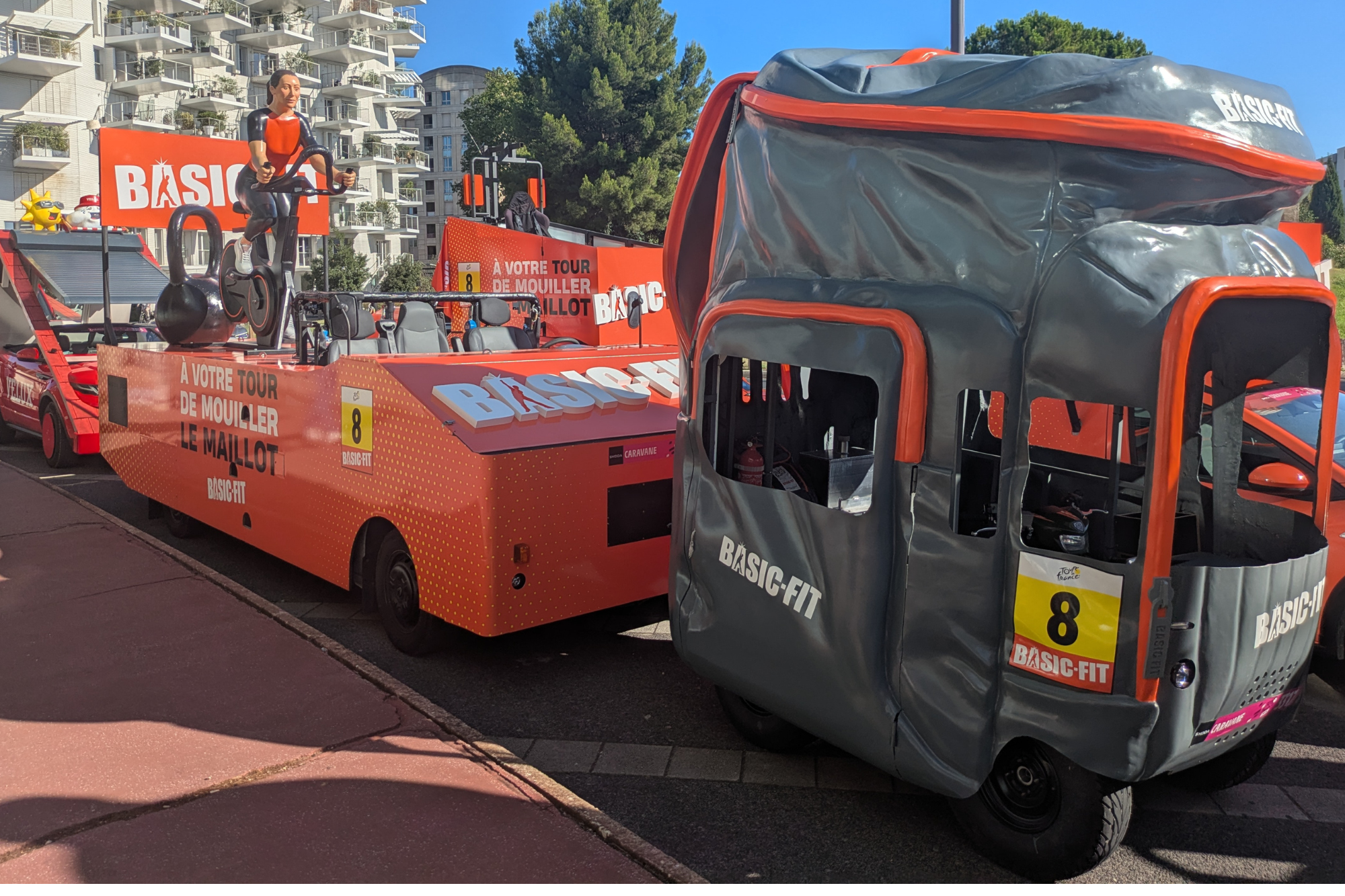
CW's Chris Marshall-Bell (middle, front row) approaches the top of Ventoux in the Basic Bit float.
His colleague, Jason, explains why he is part of the caravan. “It’s a dream come true for me,” he says. “I dreamed of this since I was five or six years old. Honestly, every day is a dream. My mother hates sports: never goes to stadiums or anything like that, but she’s always at the Tour de France because she loves the caravan. And half of the people watching the Tour de France are only here for the caravan. Afterwards I watch the race on TV and there are less people for the riders.”
The day job, if one can call it that, begins early for the mostly early-to-mid 20s crew of workers, going some way to partly dispelling the myth of this being three weeks of late night benders: they arrive at the stage town around 9am, their modified and bizarre floats parked in the centre of town as if it was totally normal for a furry giant lion or big grinning chicken to be alongside a hardware store or supermarket, and they load up their vehicles with freebies, dance in a mosh-pit, recreate a rugby scrum with the local fire brigade, and crucially load up on caffeine.
The latest race content, interviews, features, reviews and expert buying guides, direct to your inbox!
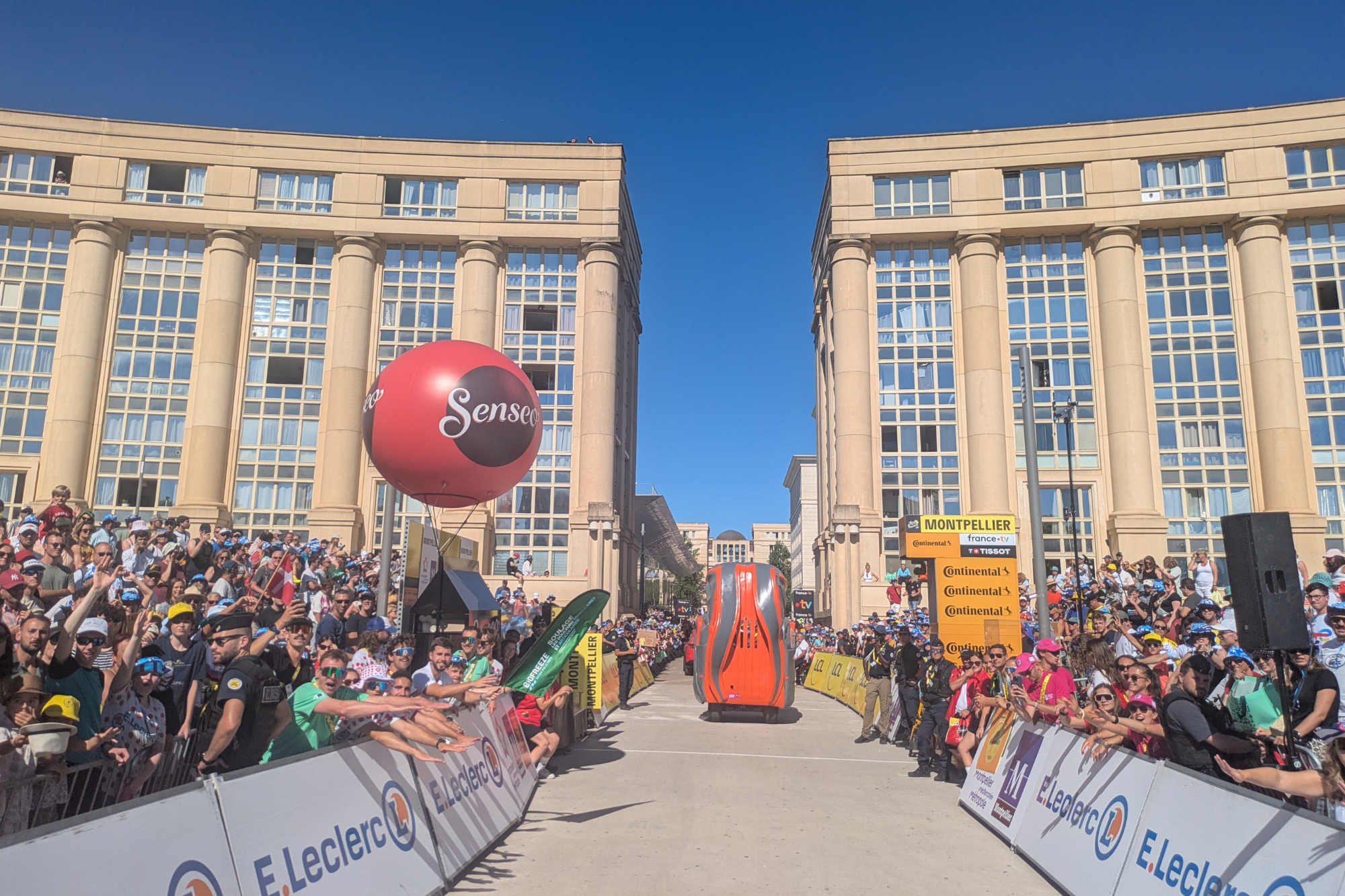
Once they start rolling, the speakers pump out pop, dance, French and cheesy hits until the caravan crosses the finish line around 90 minutes to two hours before the bike riders who this event is ostensibly for. And then the cycle continues the next day of people who really should know much better screaming at a pimped up Renault Trafic or modified quad bike that perilously balances on two wheels as it careers around roundabouts, while the smaller children look on in disbelief at both the adults and the Orangina can that hurtles towards them.
It’s absurd, bizarre, barmy, and frankly, even if I’ve raised concerns about the undeniable environmental impact of the caravan before, the Tour – the world – is better for it. A near-century tradition keeps getting wilder, and stays forever joyous.
A freelance sports journalist and podcaster, you'll mostly find Chris's byline attached to news scoops, profile interviews and long reads across a variety of different publications. He has been writing regularly for Cycling Weekly since 2013. In 2024 he released a seven-part podcast documentary, Ghost in the Machine, about motor doping in cycling.
Previously a ski, hiking and cycling guide in the Canadian Rockies and Spanish Pyrenees, he almost certainly holds the record for the most number of interviews conducted from snowy mountains. He lives in Valencia, Spain.
You must confirm your public display name before commenting
Please logout and then login again, you will then be prompted to enter your display name.
